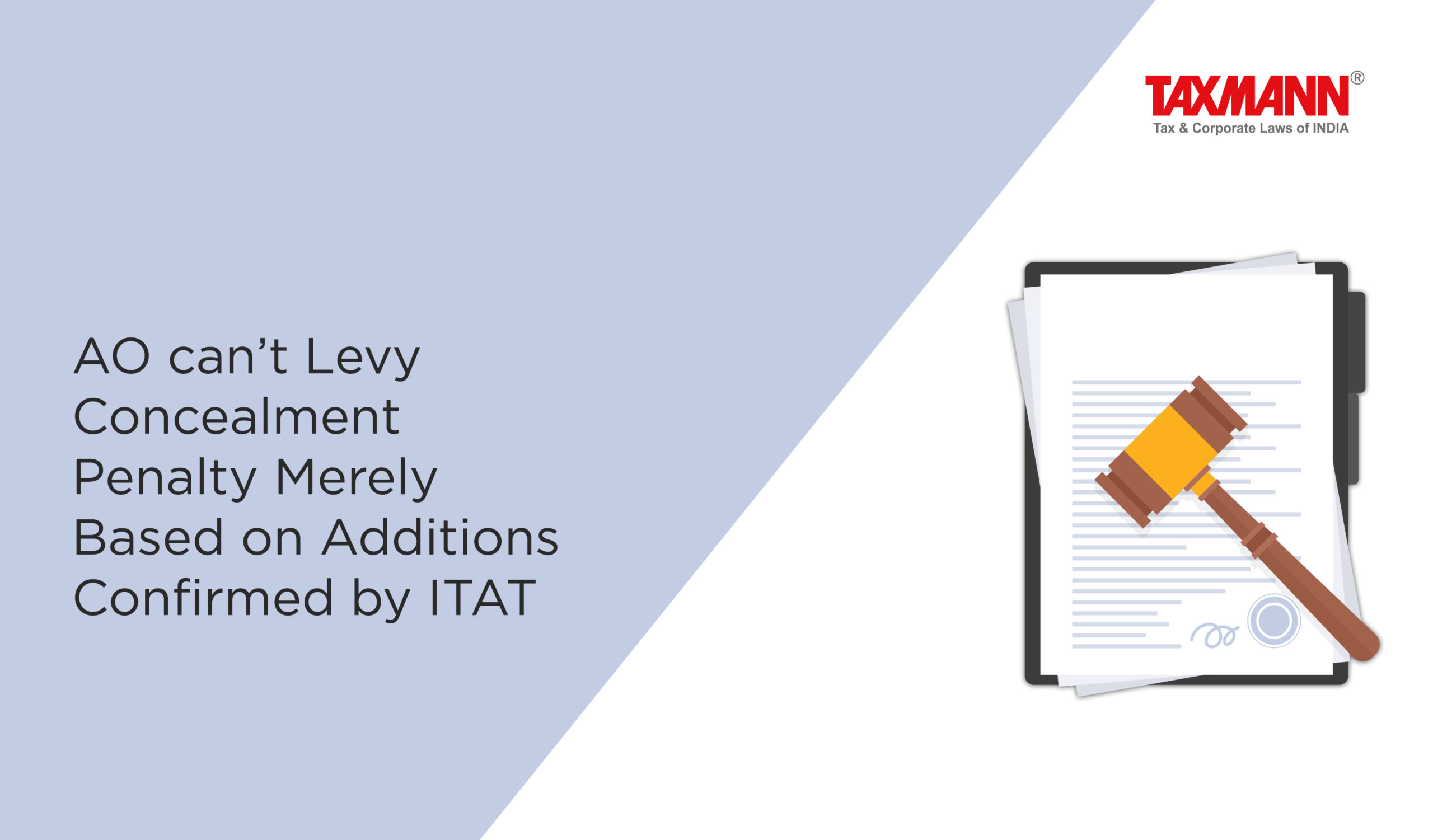AO can’t Levy Concealment Penalty Merely Based on Additions Confirmed by ITAT
- Blog|News|Income Tax|
- 2 Min Read
- By Taxmann
- |
- Last Updated on 24 July, 2023
Case Details: ISGEC Heavy Engineering Ltd. v. ITO - [2023] 152 taxmann.com 90 (Chandigarh-Trib.)
Judiciary and Counsel Details
-
- Aakash Deep Jain, Vice President & Vikram Singh Yadav, Accountant Member
- Sudhir Sehgal, Adv. for the Appellant.
- Smt.Gagan Kundra, JCIT, Sr. DR for the Respondent.
Facts of the Case
The assessee was a public limited company manufacturing heavy engineering goods and undertaking erection, procurement and construction contracts (EPC contracts). The assessee filed its return of income. Assessee’s case was selected for regular assessment, and the order under section 143(3) was passed, making additions under section 14A read with rule 8D.
On appeal, the Commissioner (Appeals) upheld the additions made by the Assessing Officer (AO). On further appeal, the Tribunal restricted the addition made under section 14A to a lump sum of Rs. 5 lakhs. After that, AO passed an order under section 271(1)(c) and levied a penalty of Rs. 1.54 lakhs on restricted addition of Rs. 5 lakhs holding that the assessee had furnished inaccurate particulars of income. The CIT(A) also confirmed the levy of penalty without assigning any reasons.
Aggrieved by the order, the assessee preferred an appeal to Chandigarh Bench.
ITAT Held
The Tribunal held that AO referred to the order of the coordinate bench in the context of quantum proceedings and held that, since the disallowance under section 14A read with rule 8D amounting to Rs. 1.42 crores is now restricted to Rs. 5 lakhs, it is a fit case for levy of penalty under section 271(1)(c). Penalty for furnishing inaccurate particulars of income levied on the amount of disallowance of Rs. 5 lakhs under section 14A read with rule 8D.
The AO levied the penalty merely on confirming the addition of Rs. 5 lakhs in the quantum proceedings. It is a settled legal proposition that the quantum and penalty proceedings are independent. Though the initiation of penalty proceedings happens during assessment proceedings and has to be evident and emerges from the assessment order. Further, before the penalty is fastened on the assessee, the AO has to record independent findings justifying the charge of furnishing inaccurate particulars of income or for concealment of particulars of income.
In the instant case, it was found that there was no independent and specific finding that the AO has recorded as to why he believes that the charge of furnished inaccurate particulars of income can be fastened on the assessee. Further, the reasons for arriving at such a finding given that penalty provisions have to be strictly construed and unless it is demonstrated that the case of the assessee falls within the four corners of provisions of section 271(1)(c)
Thus, the levy of penalty under section 271(1)(c) was to be deleted.
List of Cases Reviewed
-
- CIT v. Reliance Petroproducts Ltd. [2010] 189 Taxman 322/322 ITR 158 (SC) (para 17) followed.
List of Cases Referred to
-
- CIT v. Reliance Petroproducts (P.) Ltd. [2010] 189 Taxman 322/322 ITR 158 (SC) (para 6)
- Moh. Farhan, A. Shaikh v. Dy. CIT [2021] 125 taxman.com 253/280 Taxman 334/434 ITR 1 (Bom.) (para 7).
Disclaimer: The content/information published on the website is only for general information of the user and shall not be construed as legal advice. While the Taxmann has exercised reasonable efforts to ensure the veracity of information/content published, Taxmann shall be under no liability in any manner whatsoever for incorrect information, if any.

Taxmann Publications has a dedicated in-house Research & Editorial Team. This team consists of a team of Chartered Accountants, Company Secretaries, and Lawyers. This team works under the guidance and supervision of editor-in-chief Mr Rakesh Bhargava.
The Research and Editorial Team is responsible for developing reliable and accurate content for the readers. The team follows the six-sigma approach to achieve the benchmark of zero error in its publications and research platforms. The team ensures that the following publication guidelines are thoroughly followed while developing the content:
- The statutory material is obtained only from the authorized and reliable sources
- All the latest developments in the judicial and legislative fields are covered
- Prepare the analytical write-ups on current, controversial, and important issues to help the readers to understand the concept and its implications
- Every content published by Taxmann is complete, accurate and lucid
- All evidence-based statements are supported with proper reference to Section, Circular No., Notification No. or citations
- The golden rules of grammar, style and consistency are thoroughly followed
- Font and size that’s easy to read and remain consistent across all imprint and digital publications are applied






 CA | CS | CMA
CA | CS | CMA


